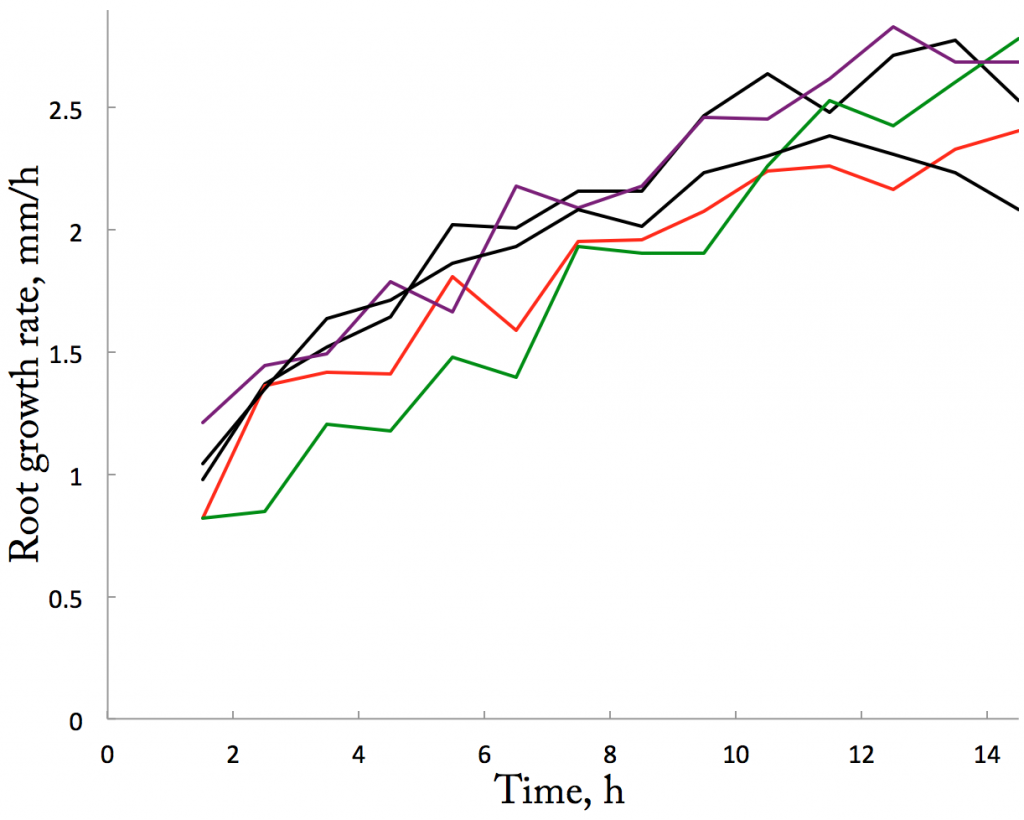Here are the results of the experiment I did last week, the first experiment with roots poked into the agar.

I explained the idea in the previous post. To reprise, poking the root down into the agar substrate will surround the root in a watery milieu. I want the roots surrounded because the planned experiments involve exposing the roots to specific inhibitors and those should work better if the growing part of the root (its tip) is exposed from all sides.
In the trials I have been reporting on, since October, I have been doing a simpler thing, namely laying the roots on the agar (or sometimes wet paper) surface. If they would lay on the surface smoothly, then the film of water that wicks up around the root tip would probably suffice to expose them uniformly. But what I kept getting could only be called “laying roughly”. Some roots grew up and off the surface, whereas others were pulled up and off by whatever means I was using to hold the kernels (tales of the doofus from many posts from the fall, e.g., here). In these young seedlings, the root is more like a toothpick than a string, so when the kernel rotates, as for example when squeezed by a doofus, the root rotates too.
Now, looking carefully at figure 1, you can see, in the second image, that the root on the far right (perhaps alt-right?) appears to bend and emerge from the agar (there is white ring circling the root where it breaks through the surface). Not sure what issue that root had with the agar but it seems to have been a minority view; all the other roots hewed to an agar path. And anyway, this sharp turn up and out is easy to see. For roots laid on the agar, the difference is not so clear because there is no surface to break through and the bend is not as acute.
Poking the roots in the agar removed the need for a doofus because the shelf of agar held the kernels up, just fine (Figure 1). Furthermore, poking the maize roots into agar was easy—the agar is soft and easily pierced by the root. None of the roots broke. However, I was concerned that they might lose oxygen in their agar bath. Apparently, they breathe easy (Figure 2).

Here is a graph showing growth rate versus time for the five roots that grew inside the agar (Figure 2). They grew faster with time for about 10 hours and then started to stablize. This pattern is typical of the experiments so far (e.g, here and here). While I would love to see steady growth for all 15 h, at this point, I’ll settle for reproducibility. By the end of the experiment, all roots grew faster than 2 mm/h. This is as fast as any of the previous experiments and shows no hint of panting for oxygen.
On the face of it, this seems, at last, like the needed experimental system. But ha ha! Let’s see if I can do it again. Twice actually. I will repeat this twice and see how consistent the results are. Any bettors out there?